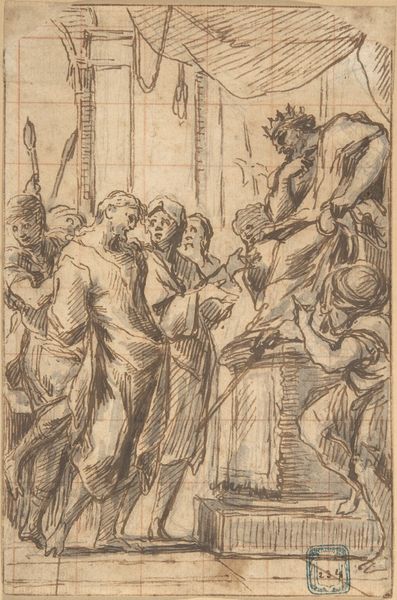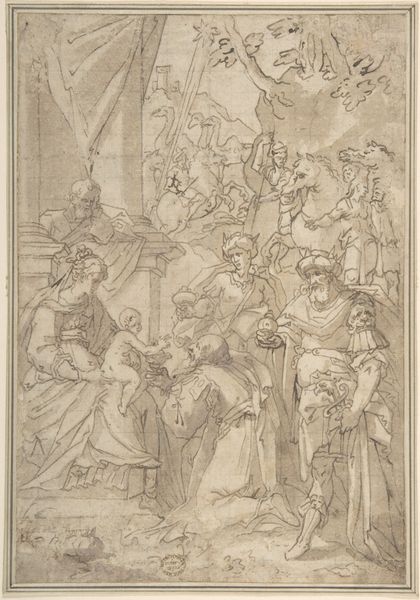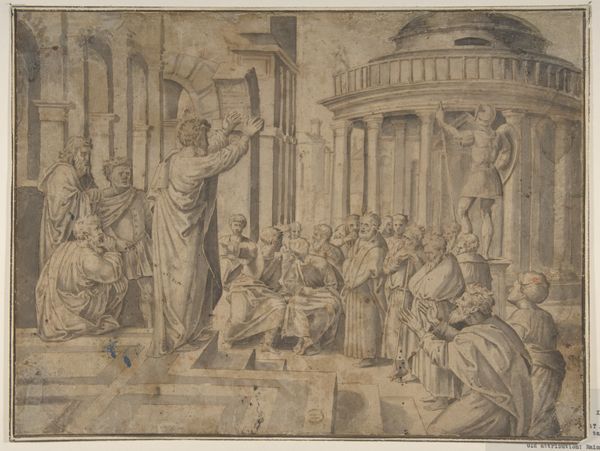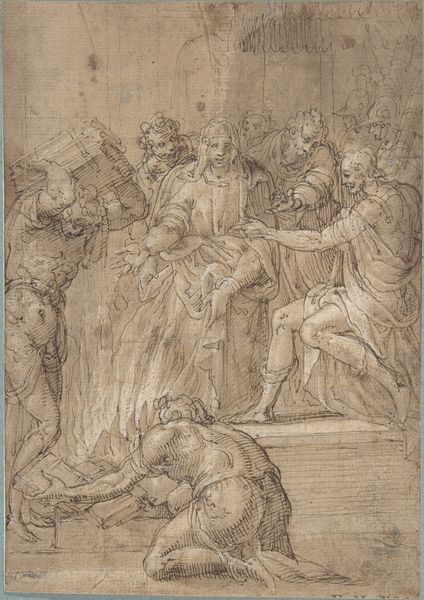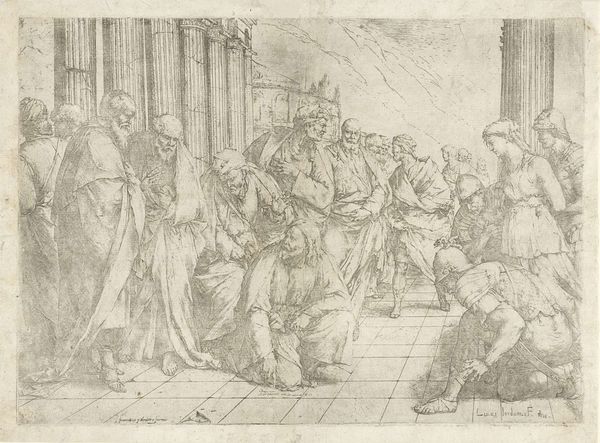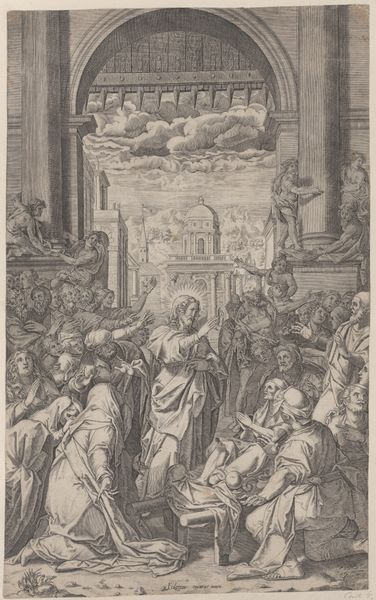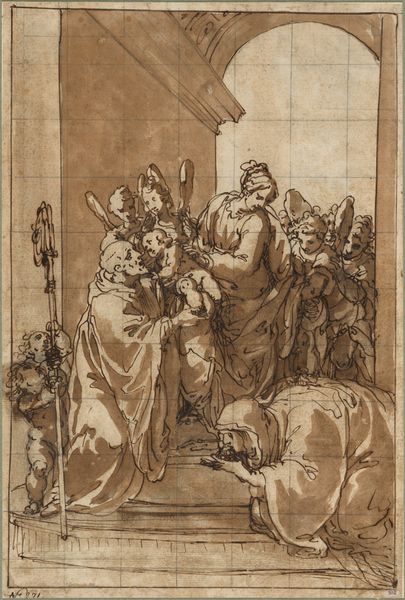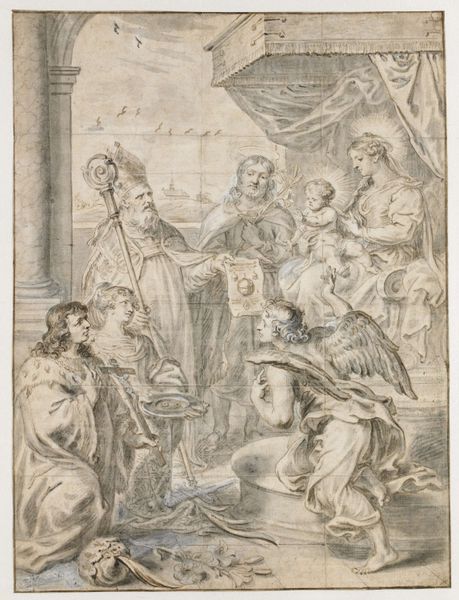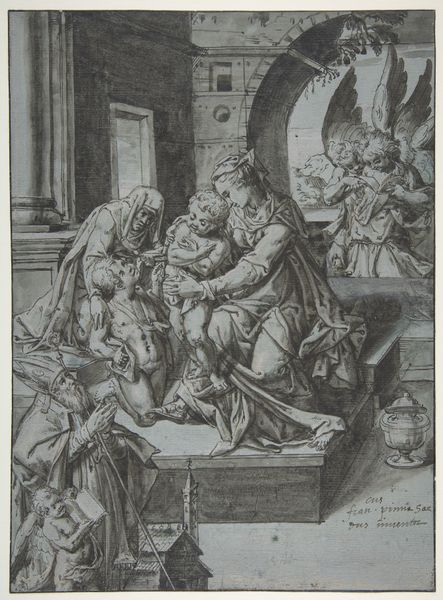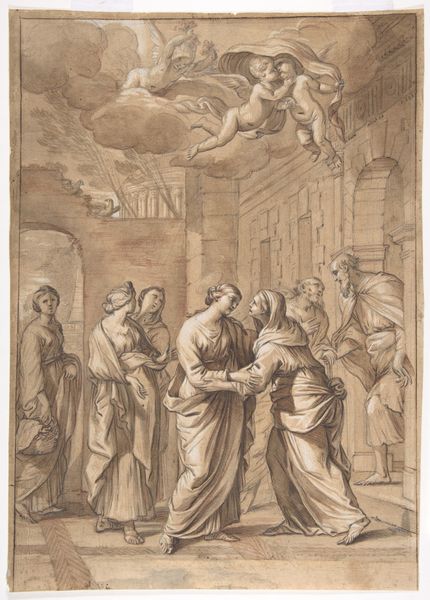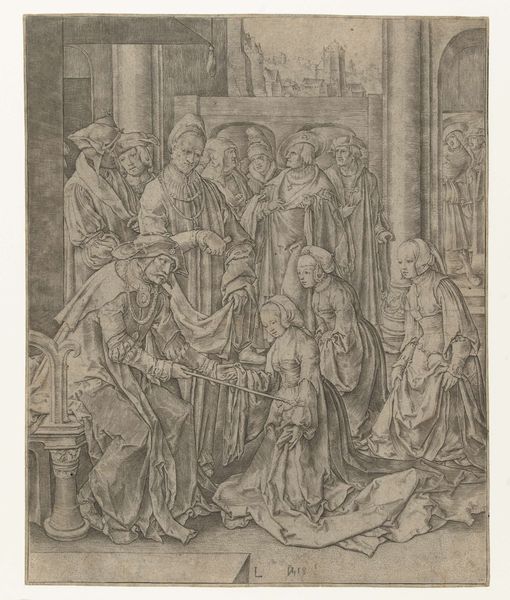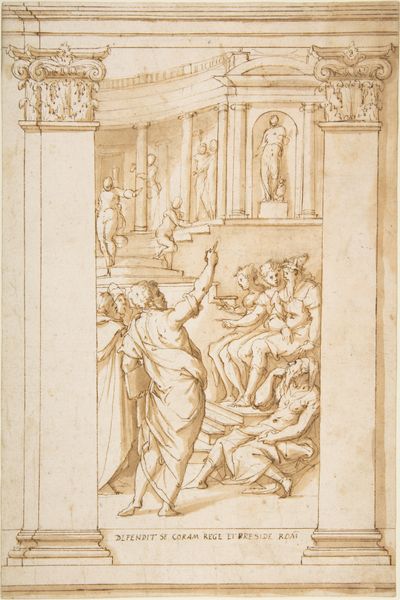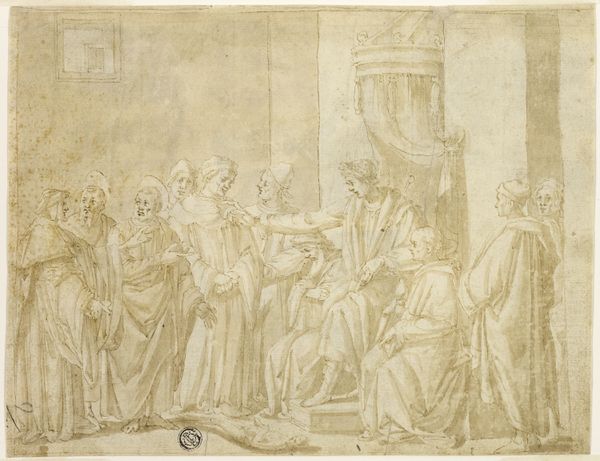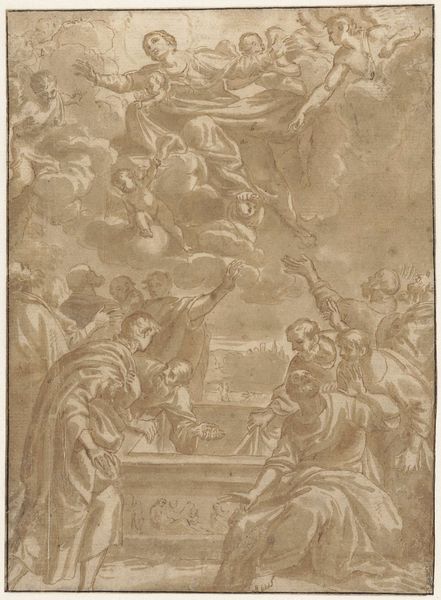
Queen Intervening to Spare the Life of a Bishop Saint c. 1634
0:00
0:00
drawing, print, paper, ink, chalk, charcoal
#
drawing
#
narrative-art
# print
#
charcoal drawing
#
figuration
#
paper
#
charcoal art
#
ink
#
coloured pencil
#
chalk
#
charcoal
#
history-painting
#
academic-art
Dimensions: 310 × 226 mm
Copyright: Public Domain
Editor: Here we have Lazzaro Tavarone's drawing, "Queen Intervening to Spare the Life of a Bishop Saint," made around 1634, utilizing materials like ink, chalk, and charcoal on paper. There's such dramatic tension! What jumps out at you in terms of its historical context or technique? Curator: Consider the materials: ink, chalk, charcoal—relatively inexpensive and readily available. This suggests the work functioned perhaps as a preparatory sketch, intended for circulation within the artist's workshop, or even among a wider network of artists and patrons, impacting art production's division of labor. Notice how the layering and blending of chalk and charcoal create depth and volume, mimicking the textures and drapery of expensive fabrics worn by the elite in the scene. What does that signify, to simulate such wealth using mundane materials? Editor: So the materials themselves speak to a potential audience and even mimic social hierarchy. It wasn't necessarily meant to be a "precious" object in itself? Curator: Precisely. Its value lay in its function: facilitating the production of a final artwork, or communicating artistic ideas. How does the drawing, as a reproducible image, democratize access to power or portrayals of saints? It’s a mediated image reflecting complex social power dynamics through affordable materials. The narrative element—the intervention itself—gains traction precisely because of its mode of distribution and production. Editor: I hadn't considered the distribution aspect before. Curator: Yes, thinking about artistic creation as material production lets us appreciate both the image *and* its life cycle: How and why was it made? Who saw it? And how might its reception differ across social classes? Editor: It really opens up the idea of the artwork as not just an image, but part of a larger network of exchange and production! I'll never look at materials the same way.
Comments
No comments
Be the first to comment and join the conversation on the ultimate creative platform.
